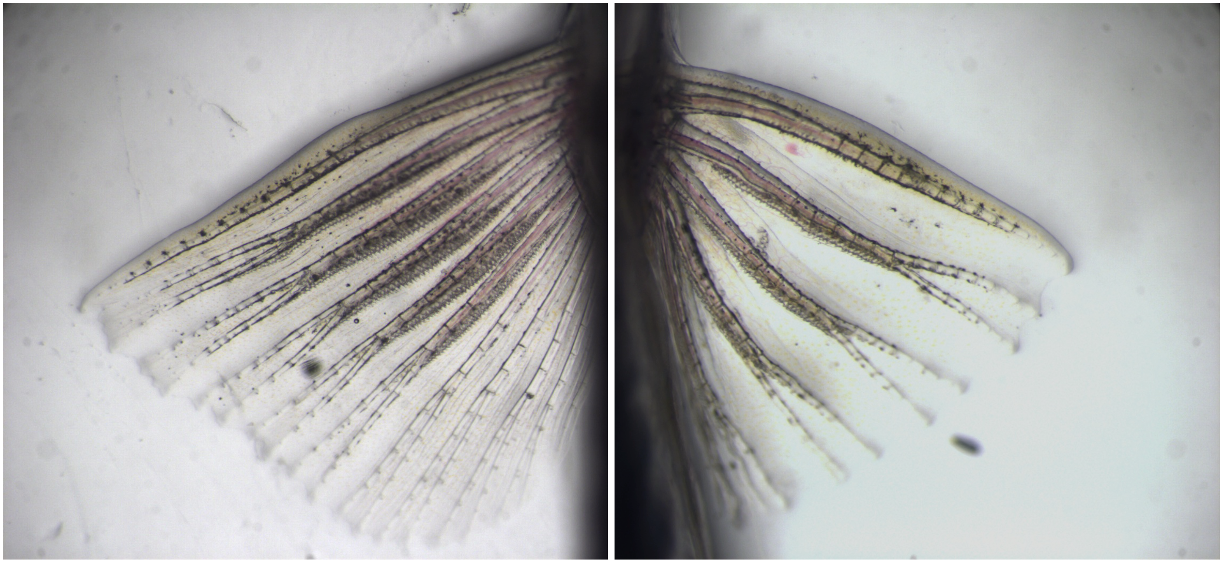Paulina was an undergraduate when she first heard Professor Akimenko speak about zebrafish research. These small, striped fish play a big role in science. Among developmental biologists, zebrafish are a favourite model organism because they grow quickly, they lay hundreds of eggs and their transparent embryos let scientists watch their development in real time. “I had just read the book Your Inner Fish,” Paulina recalls, “and I was fascinated by the idea that our limbs evolved from fish fins. When I heard about Professor Akimenko’s work, I knew I wanted to be part of it.”
Together, Akimenko and Paulina focused on a mysterious family of genes called actinodins. Found only in fish, these genes are responsible for producing strong, hair-like fibres called actinotrichia. The fibres form a kind of scaffolding in developing fins, giving them shape and strength before bony rays appear.
Here’s the twist: humans and all other land animals lack these genes. Somewhere along the evolutionary path from water to land, actinodins disappeared. And with them, the actinotrichia vanished too.
To understand the impact of this loss, Akimenko, Paulina and their team used CRISPR-Cas9, a powerful gene-editing tool, to create zebrafish mutants that lacked two of the actinodin genes. As expected, the fish developed malformed fins with fewer, shorter and poorly shaped rays. But the real surprise came later: males were unable to reproduce. Their sperm was fine, but their deformed pectoral fins were unable to complete the courtship movements that would stimulate the female and trigger egg release. “It was completely unexpected,” Paulina says. “We knew the fins would be affected, but we didn’t think it would impact reproduction.”
This finding suggests that the actinodin genes, while not directly involved in reproduction, play a crucial indirect role. Without strong, properly formed fins, male zebrafish can’t perform the required courtship behaviours to pass on their genes. And that raises a fascinating question: if losing actinodin genes hinders reproduction in fish, how did emerging terrestrial species survive the transition to land? The answer may lie in how ancestral fish used their fins for mating.
“This research reminds us that evolution is complex and is not only about changing bones or muscles,” says Akimenko. “It’s about how those changes ripple through the whole organism — how they affect behaviour, reproduction and survival.”
As Paulina prepares to publish her findings, she reflects on the experience: “It’s been challenging, but I love this work. You have to be patient, creative and open to surprises. Sometimes the most exciting discoveries are the ones you didn’t expect.”
By studying zebrafish, Akimenko and Paulina are showing that evolution isn’t just about anatomy. It also involves behaviour, movement and, ultimately, the ability to ensure reproductive success.
Read more
